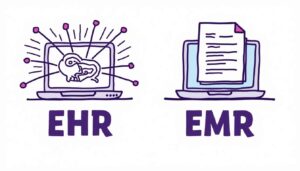The Role of AI in Medical Imaging: Revolutionizing Healthcare
21 Aug 2025 By: Vlade Legaspi
Updated
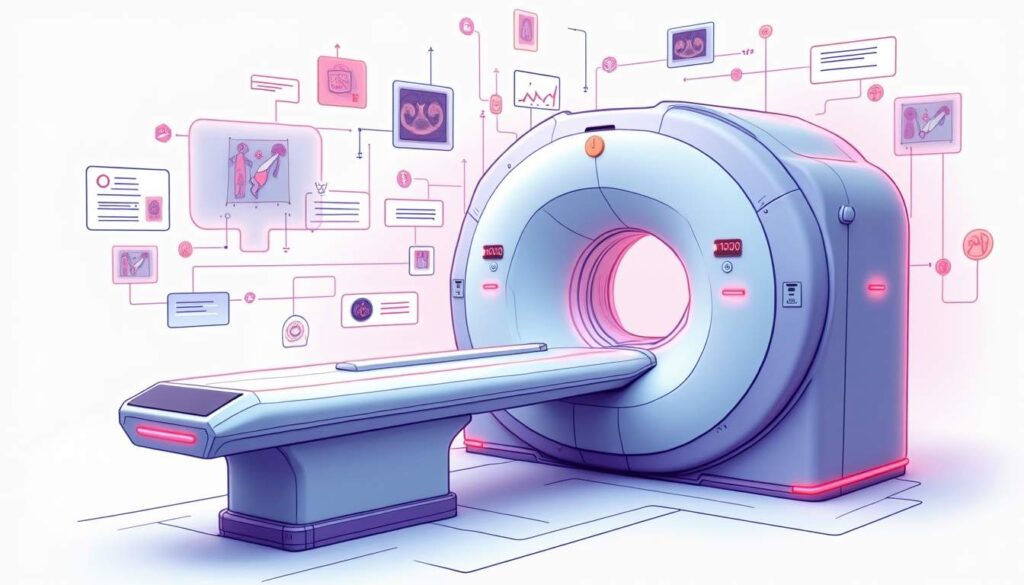
AI in Medical imaging technology has transformed the methods doctors use to detect diseases and their subsequent treatment and monitoring. The technology enables faster and more precise interpretation of medical scans. The transformation has led to better medical care. The field continues to encounter challenges related to data quality and system trust. The rapid advancement of this field demonstrates strong potential to enhance medical outcomes and extend patient survival rates.
The Evolution of Medical Imaging and the Advent of AI
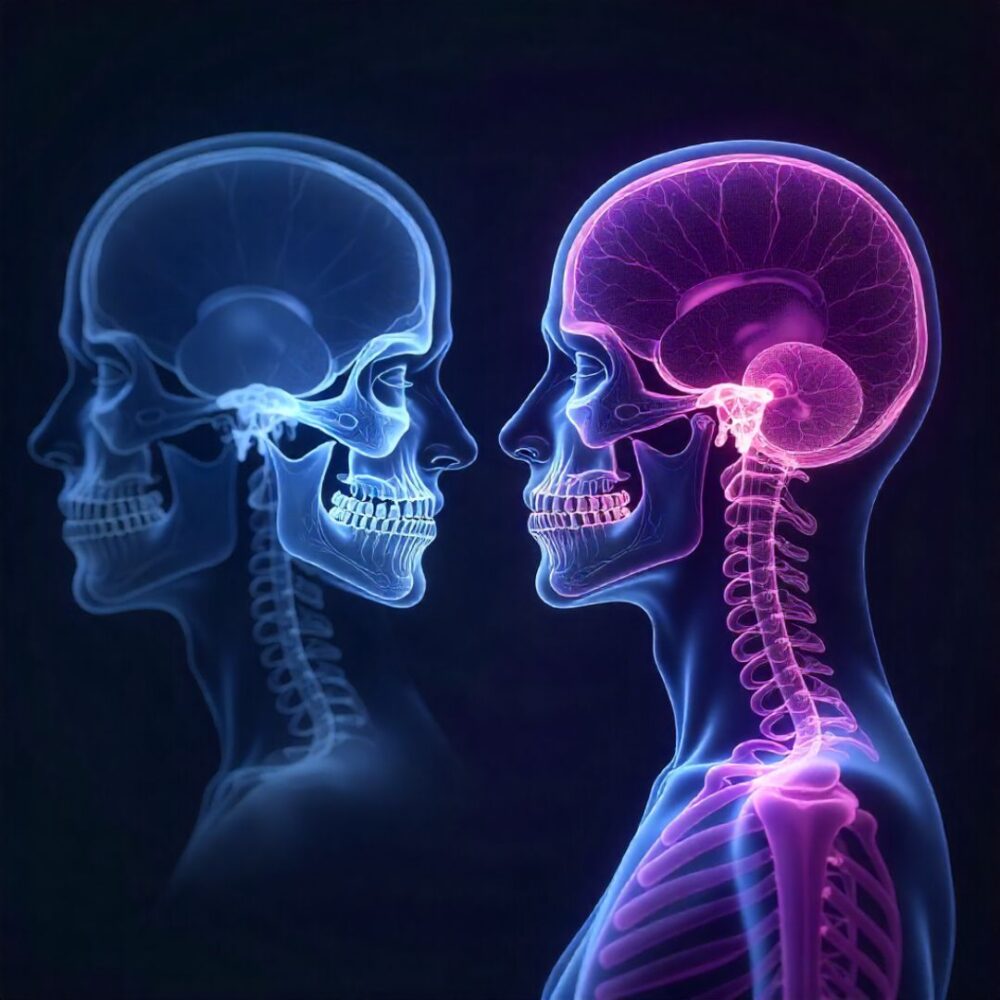
Medical imaging has transformed modern medicine during more than 100 years. The medical field started with X-rays before advancing to MRI and CT and PET scans. Medical tools enable doctors to detect diseases at their early stages. The initial X-ray technology had its limitations yet it revolutionized medical treatment approaches. The development of technology led to better image quality and expanded the range of medical conditions that could be diagnosed.
Radiologists must interpret images quickly under stressful conditions to perform their reading tasks. This can lead to mistakes. AI in medical imaging now helps cut errors by reading large data sets fast and with accuracy. AI enhances the speed of image reading and builds trust and maintains consistent results in medical image interpretation. The technology enables doctors to deliver better care while enhancing patient treatment outcomes.
From Manual Interpretation to Automated Analysis
The main application of AI in medical imaging relies on machine learning (ML) and deep learning (DL) algorithms to detect patterns and anomalies in images. The evolution of AI systems progressed from rule-based systems to neural networks which learn from millions of annotated images to detect faint features beyond human perception. The training process requires massive datasets to feed these algorithms which enables them to understand complex imaging modalities and their corresponding pathologies.
Convolutional neural networks (CNNs) excel at image classification tasks which makes them suitable for tumor and fracture detection and other abnormality identification. The transition from human-based interpretation to AI-assisted analysis represents a major advancement in radiology which offers both speed and diagnostic consistency. AI systems continue to advance through ongoing research efforts which aim to enhance their population and imaging condition generalization capabilities. These developing technologies will enable radiologists to use them for diagnostic support while providing additional tools that boost their diagnostic abilities for better patient care collaboration.
Key Applications of AI in Medical Imaging

AI in medical imaging now powers many key tasks that improve how doctors find and treat illness. Below are two major uses with strong impact on care.
1. Early Detection and Diagnosis of Diseases
AI in medical imaging helps spot disease early, often before symptoms show. Tools now find lung nodules in CT scans, catching cancer sooner. A 2023 Nature Medicine study showed AI beat radiologists in lung cancer detection. It cut false positives by 11% and false negatives by 5%. AI also finds diabetic retinopathy from eye scans to help stop vision loss. In mammograms, AI now spots signs of breast cancer with great accuracy. These early findings let doctors act faster and cut costs, leading to better care.
2. Enhancing Image Quality and Reconstruction
AI improves scan image quality by removing noise and blur. It makes MRI and CT images clearer and more useful for doctors. AI also speeds up scan times. Some AI tools cut MRI time by 50% without losing detail. Faster scans help in emergencies and improve patient comfort. AI can even rebuild images using less radiation, keeping patients safer. These upgrades make imaging quicker, safer, and more reliable for all.
3. Automated Segmentation and Quantification
AI in medical imaging can map out tumors and organs with high accuracy. This helps plan surgeries and radiation in cancer care. In heart scans, AI tracks heart function and spots changes over time. It can measure ejection fraction and detect heart issues. These tools help doctors adjust treatment quickly and with more confidence. As AI grows smarter, it will catch more complex signs and boost personalized care.
4. Workflow Optimization and Decision Support
AI speeds up radiology work by sorting urgent cases and cutting report time. It can flag signs like brain bleeds in CT scans fast. AI tools also guide doctors with smart tips using past data and scans. This helps doctors make better and faster choices. With AI handling basic tasks, radiologists focus on harder cases. AI also builds teamwork between doctors and machines. As it evolves, AI will play a bigger role in smart, joined-up healthcare.
Real-World Impact: Case Studies and Success Stories
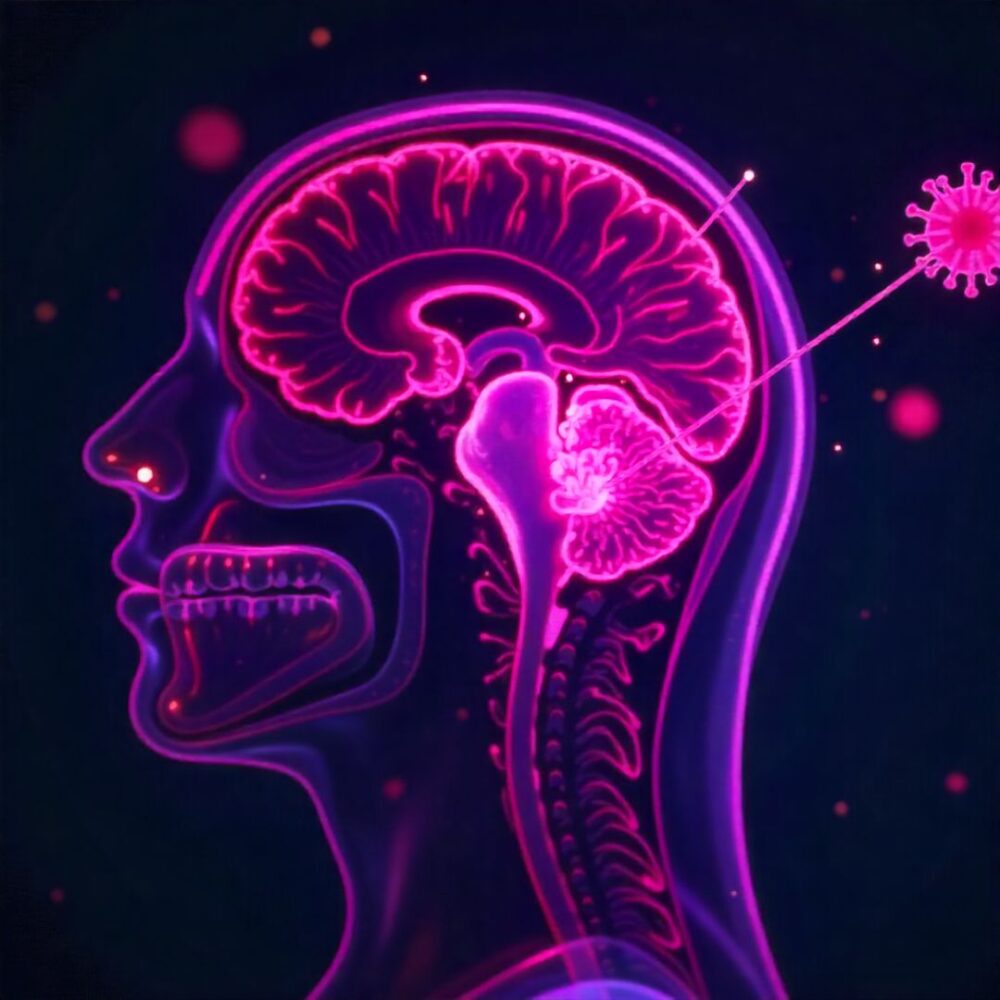
Real-World Impact of AI in Medical Imaging
AI in medical imaging now shows real value in hospitals. Leading centers use AI to boost accuracy and care. These three examples highlight its power.
AI in Breast Cancer Screening
AI now helps read mammograms with high accuracy. A 2022 Lancet study found AI matched or beat top radiologists. It raised cancer detection and cut false recalls. Fewer false alarms mean fewer unneeded biopsies and less stress. AI also finds hidden patterns in large data sets. This helps build custom screening plans based on each person’s risk. With AI, care becomes more tailored and timely.
Improving Stroke Diagnosis with AI
AI speeds up stroke care by spotting clots and bleeds in brain scans. It gives fast alerts in ERs, cutting treatment time and saving lives. Hospitals using AI report quicker action and better results. AI also helps in remote care. It lets experts check scans from afar, helping patients in rural spots get fast help too. This tech boosts stroke care across all regions.
AI-Powered Imaging in COVID-19 Response
During COVID-19, AI tools read lung scans fast. They told doctors how bad the infection was and how it changed over time. This helped busy hospitals make quick choices. AI also linked scan data with symptoms and lab results to guide full treatment plans. These tools now shape how we handle big health crises. Lessons from the pandemic will help guide future care.
Challenges and Ethical Considerations in AI-Driven Medical Imaging
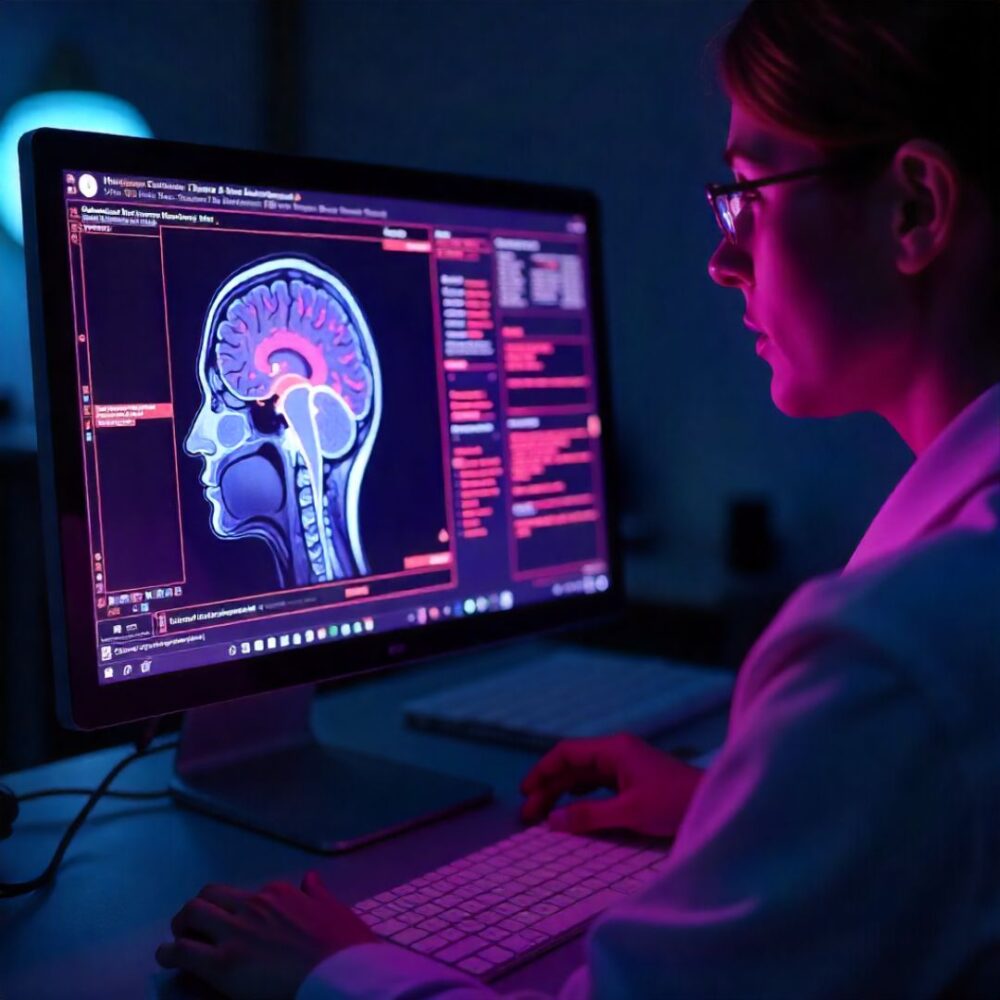
AI in medical imaging shows great promise, but key challenges must be solved to ensure safe and fair use. These fall into three major areas.
1. Data Quality and Bias
AI needs strong, diverse data to work well. But scan data often varies by hospital, device, or patient group. Poor data can cause bias and miss key signs in some groups. This may worsen health gaps. To fix this, we need better, more varied datasets and open AI testing. Bias can also come from how AI is built. If creators miss bias in their code, it may repeat unfair patterns. Teams with doctors, data experts, and ethicists must work together to catch these early.
2. Regulatory and Legal Frameworks
Rules for AI in healthcare lag behind fast tech changes. Groups like the FDA approve AI tools, but new types, like systems that keep learning, need new rules. Who’s to blame if AI gets a diagnosis wrong? Legal systems must answer this to build trust. There’s also confusion about who owns AI-made insights. Shared rights and fair use laws are key to drive growth and share benefits fairly across healthcare.
3. Integration into Clinical Practice
AI must fit smoothly into doctors’ daily work. Radiologists need to know how AI works, what it can miss, and how to use it right. Doctors should lead care, not machines. AI should support, not replace, human skill. Easy-to-use tools and strong training will help doctors trust and use AI more. This will raise care quality and support better outcomes for all.
The Future of AI in Medical Imaging
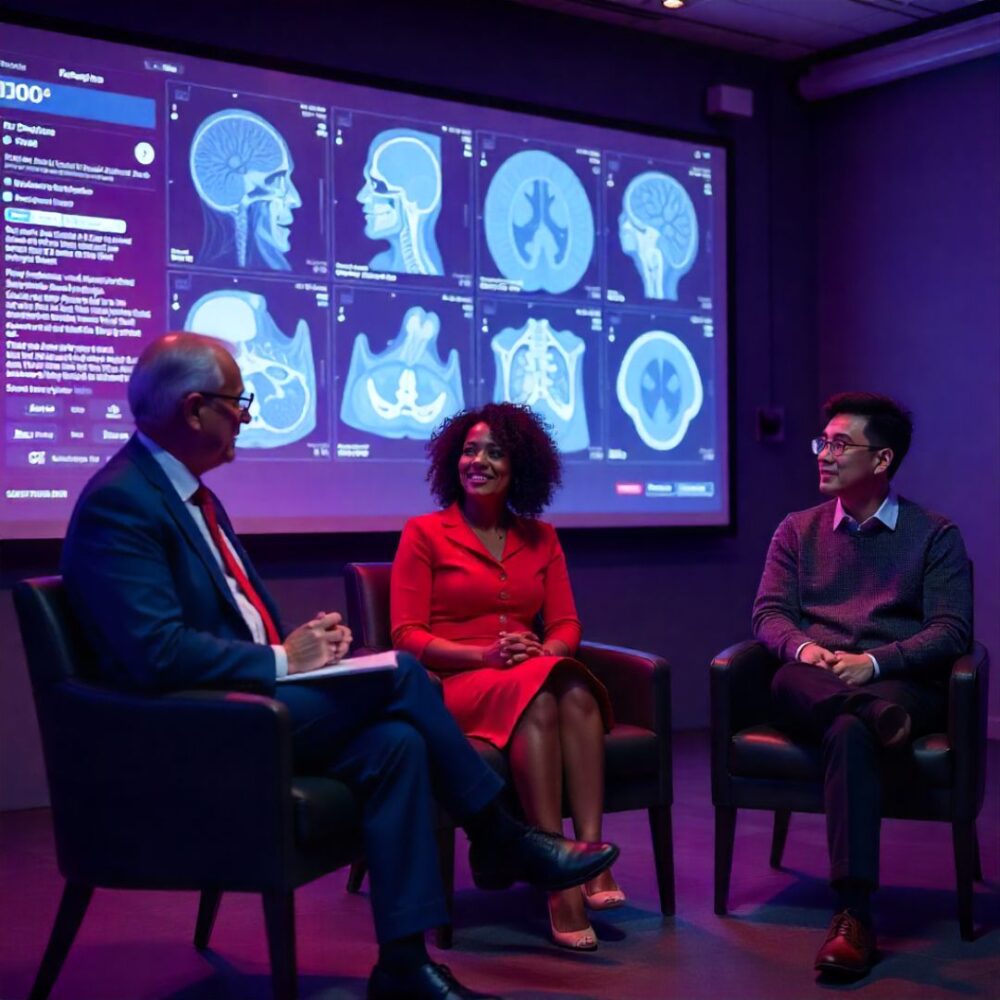
AI in medical imaging is heading toward smarter, more personal care. New trends show where it’s going next.
1. Multimodal AI and Precision Medicine
Future AI will merge scans with gene data and health records. This combo will guide care based on each patient’s traits. AI may soon predict how tumors act or respond to treatment. It can spot signs in data that humans miss. This will lead to faster, better care. It can also group patients by risk to target treatment more precisely. That means better results and fewer side effects.
2. AI-Driven Telemedicine and Remote Diagnostics
AI will bring expert scan reading to rural areas. Linked with telemedicine, it gives fast answers anywhere. Local clinics can use AI to review scans on the spot. Remote doctors can then weigh in if needed. This cuts travel and speeds up care. It helps close gaps between rich and poor regions, improving care for all.
3. Continuous Learning and Adaptive AI Systems
Some AI systems will keep learning as they go. This helps them stay sharp as medicine changes. These tools will need strong checks to stay safe and fair. Doctors, tech experts, and regulators must work together. As AI learns from real results, it may unlock new medical clues. These tools could even spark major leaps in research and treatment.
Trending Now!
AI is Changing X-Ray Analysis in Australia
Half of Australians now use AI, and its role in healthcare is growing fast. CSIRO’s AEHRC is using AI to help read chest X-rays and ease the load on radiologists. Dr. Aaron Nicolson and his team train visual language models (VLMs) with chest X-rays and patient data to create accurate radiology reports. With demand rising and too few specialists, this tech could greatly improve speed and care.
Safe, Ethical, and Effective Use of AI in Health
AEHRC ensures AI tools are safe, fair, and always include a human in the loop. The models are being tested in Brisbane and may soon expand to more clinics. Extra patient info like triage notes and vitals has made reports even better. AEHRC also explores using VLMs to process medical documents faster. The goal: support doctors, not replace them, while boosting accuracy across diverse patient groups.
Conclusion
AI is changing medical imaging by boosting accuracy and easing doctor workloads. It helps find disease early and tailor treatment for each patient.
Though issues like data bias and rules remain, teamwork and progress will solve them. Used wisely, AI will shape the future of care for the better.
Join Helpsquad Health to see how AI can improve your imaging workflow. Start your free trial today and explore smarter, faster, and more accurate diagnostics. Let’s shape the future of healthcare together.


